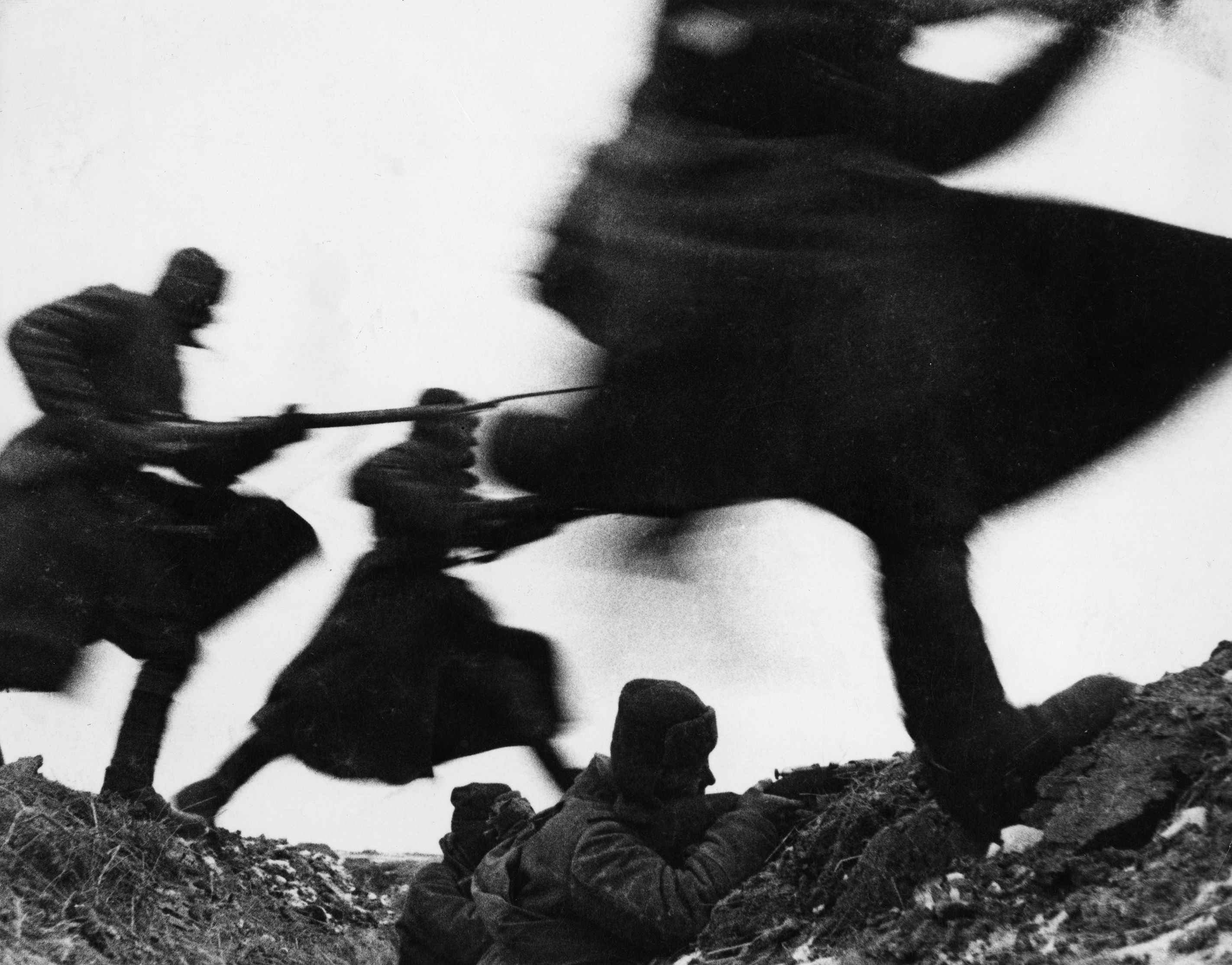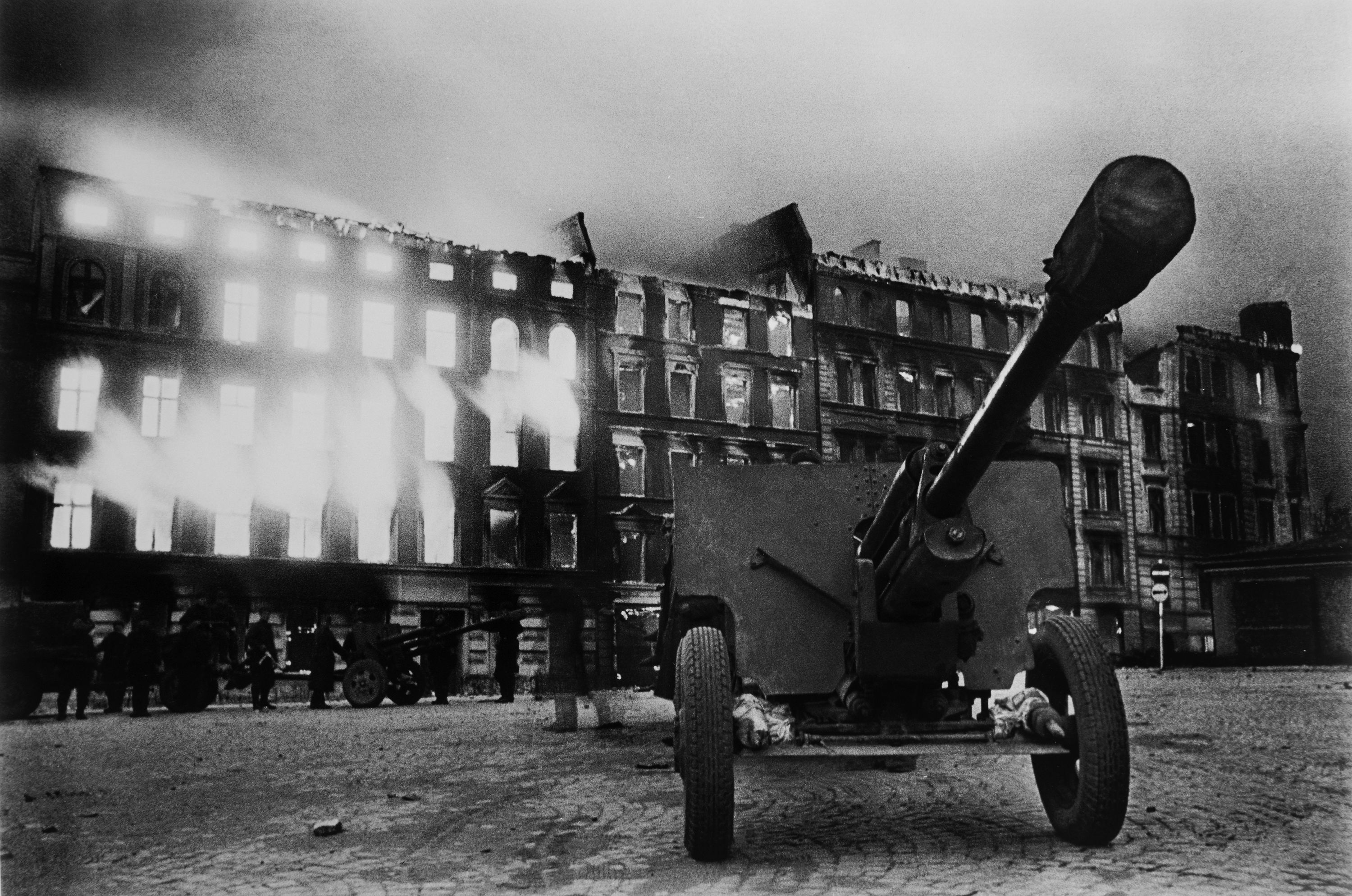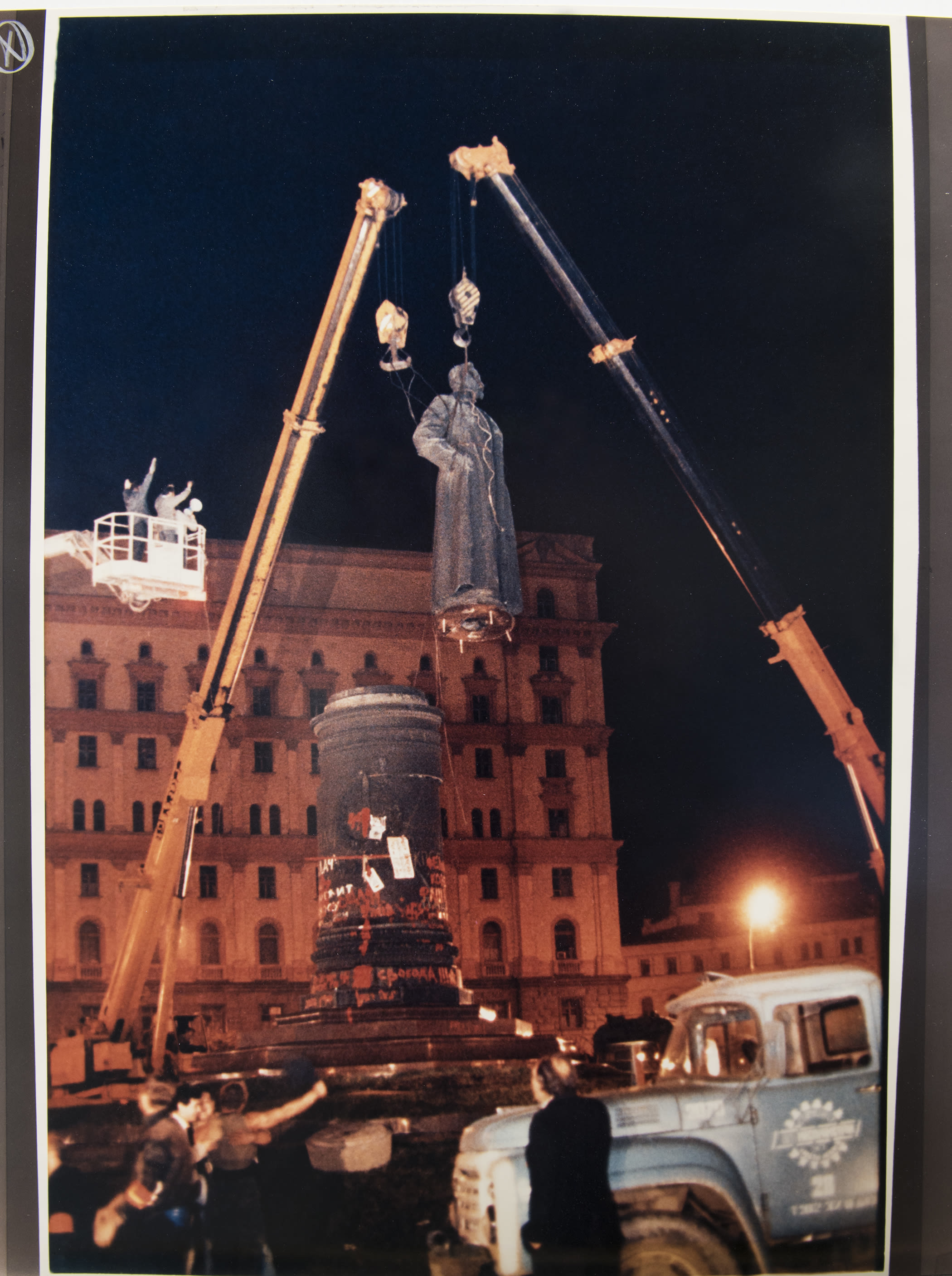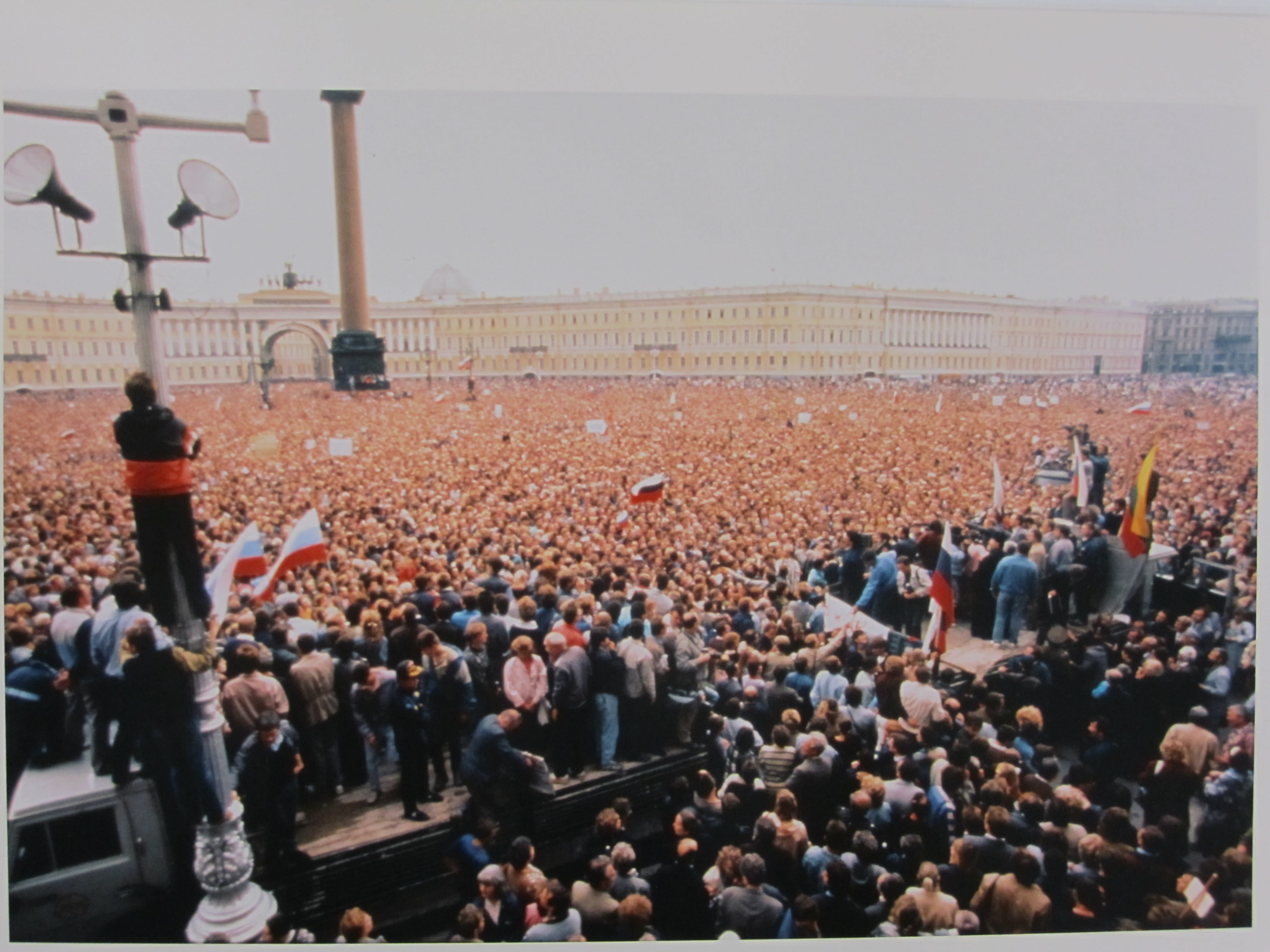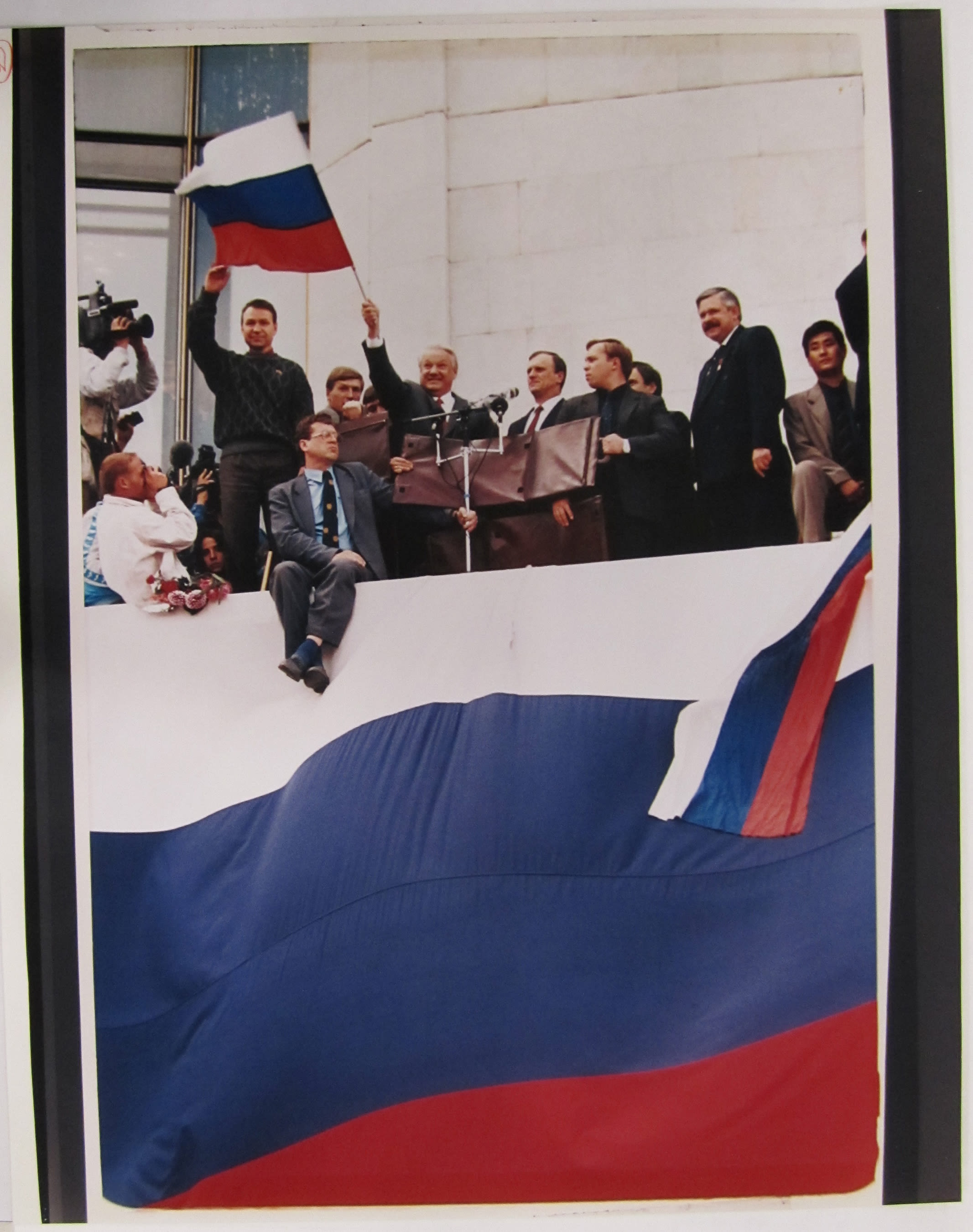New Soviet Scenes Exhibit Opens at The Ringling
Twenty-five years ago, the August Coup of 1991, which ended the Communist regime and ultimately the entire Soviet Union, was documented by both foreign and Soviet photojournalists, who experienced the fall of the regime and life after. Forty-six years before that, acclaimed photojournalist Dmitri Baltermants photographed the Soviet Union during World War II. These two collections of historical photography come together in Soviet Scenes: Baltermants’ Photographs of WWII and Photojournalism from the August Coup at the Ringling Museum of Art and Design, which runs through Jan. 8, 2017.
All of the pictures in the show come from the museum’s private collection, and have been donated over the past few years by several photojournalism collectors. “[Photojournalism] is a rare thing to embrace as a photography collector,” says Christopher Jones, the associate curator of photography and exhibitions at the museum. Jones was looking through the museum’s photography collection, noticed the high volume of Soviet photography and realized the potential for an exhibition coinciding with the 25th anniversary of the August Coup.
Dmitri Baltermants was an instrumental figure in the portrayal of the Soviet Union at war in the 1940s, and he served as a soldier as well as journalist during WWII. His photographs are often quite staged and posed, but sometimes more closely resemble the dramatic nature of American photojournalism at the time.
The collection of images from the 1991 coup is the work of many journalists who experienced the end of the Soviet Union from within the action. “They’re the two historical bookends of Soviet empire,” Jones says.
“I think it’s fascinating to compare the different approaches to reporting and photojournalism that we have in one gallery: Baltermants’ work compared to the mass media reporting photojournalism from the 1991 event, 50 years later,” he says. “It’s interesting to compare the different visual languages and discourses that surround those moments.”
When looking through the images, Jones realized the significance of the fall of the Soviet regime. “It’s fascinating to think now, looking back 25 years ago at this political entity—The Soviet Union—that was one of the world’s major superpowers. That empire and culture is gone, it’s changed, it doesn’t exist anymore,” he says. “Dissolution caved in in these action-packed few days in August 1991, and these journalists were there as eyewitnesses when it all unfolded.”
Soviet Scenes will run until Jan. 8. Cost is included in museum general admission. For more information, click here or call (941) 359-5700.
